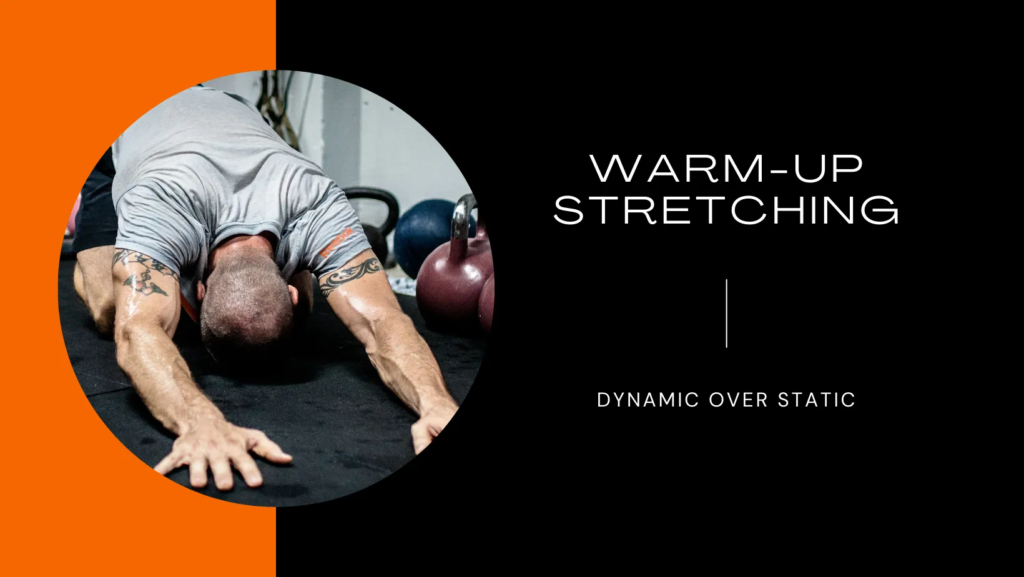Which Way Round Matters
Understanding how to warm up before carrying out training/exercise can be the difference between performing to your best or potentially injury!
It was long considered the norm to carry out static stretching after the general warm-up to prepare the muscles for the bout of activity that was to ensue.
Even in the late 90s and early 2000s, I, myself, used to use static stretching before all workouts ranging from kickboxing, boxing, and grappling right through to strength training in the weights room.
And now looking back on it, I can see why tweaks and strains, were picked up, especially during competition months.
Why was that?
By comparing my own experiences from before I knew to use other methods of warming up through to later on in my career, I will explain.
Out of season, when our training was technique based we would do a general warm-up protocol of jogging on the spot, push-ups, squats etc. to warm the muscles. And then begin static stretching for around 10-15 minutes before practising techniques for roughly 45 minutes after which we would spar.
This 45-minute period, actually acted like a dynamic/sport-specific warm-up be it a long one.
However, during the run-up to competitions, sparing became the main focus and so, once the warm-up had been completed, we would begin combat. Back then, we were training for semi-contact and light-continuous points fighting so, speed, power and agility were ramped up, and this would be where the injuries popped up.
Static stretching would indeed improve flexibility which was essential for high kicks. However, the static stretches were held from 30 seconds upwards of 2 minutes, which was down-regulating my body’s ability to activate the antagonist muscles in time, meaning my kicks and punches would still be accelerating past peak range, in turn causing injuries!
I can also now see my sharpness, that ability I had to react to an opportunity, took longer to switch on if I hadn’t done 45 minutes of technique drills beforehand (the dynamic/sport-specific stretching).
It is this that leads me to the latest and most current findings in support of dynamic stretching prior to exercise or training.
The latest meta-analysis shows that static stretching negatively impacts strength and power during sports/training. In all reviews, static stretching does improve flexibility but stretches that are held for extended periods negatively impact speed and power performance. (Does pre-exercise static stretching inhibit maximal muscular performance and DYNAMIC VS STATIC STRETCHING WARM UP THE EFFECT)
What these studies also show is that dynamic warm-ups do not increase flexibility. However, they do improve muscle recruitment and reaction time which, as I look back over my martial arts career in those early years, line up perfectly with what I experienced.
There is indeed the argument that some sports do require improved flexibility, for example, kickboxing. Further studies now show for acutely increasing flexibility whilst still maintaining optimal strength performance during training, using a foam roller appears to be the way to go. (Acute Effects of Foam Rolling)
To conclude
Prior to exercises or training, after the general warm-up has taken place, you must consider what is required of you during the training session. If having increased flexibility is needed, spending 10 minutes using a foam roller to target specific areas will not impact performance and does improve flexibility.
If you do need to perform a static stretch in the warm-up, try not to hold it for longer than 45 seconds as it is generally advised against, especially in speed and power-related environments.
If flexibility is not a concern during the training session, a dynamic warm-up will provide the best results, supporting speed and power going into the training session to follow.
After the training session has finished, this would be the optimal time to carry out your static stretching especially to help improve flexibility as you’re still warm and you will not impact your training session.

